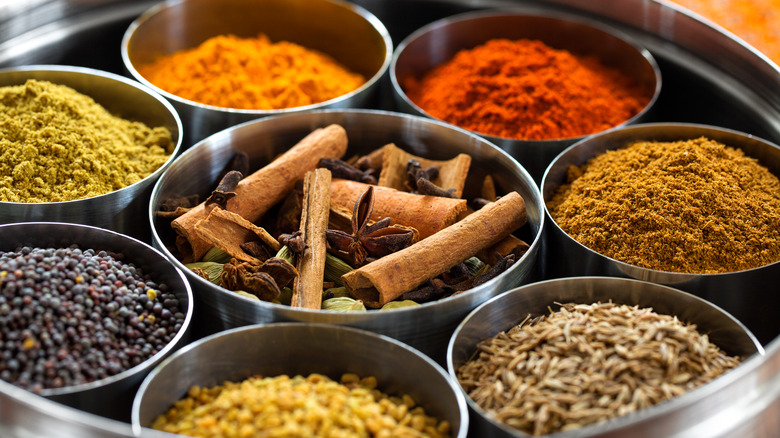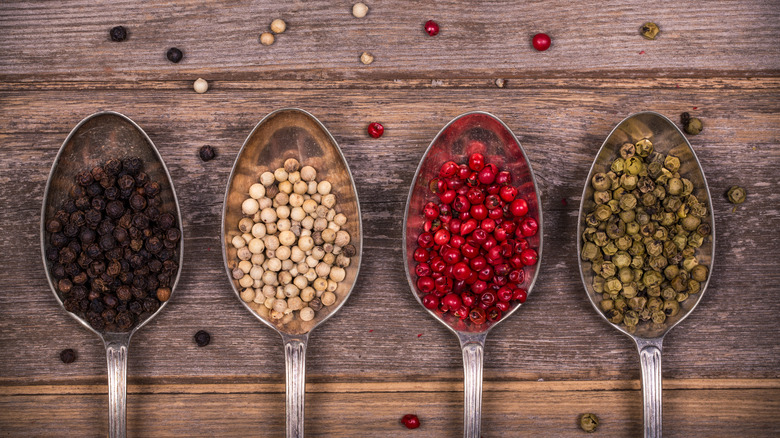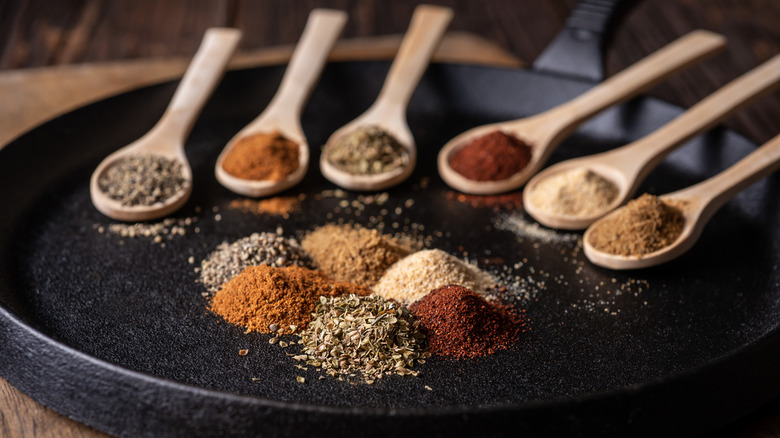Here's When You Should Use Whole Spices Vs Ground
So often, spices are what make food interesting. There's a reason the expression is "variety is the spice of life." But you can't just throw spices randomly in a bowl because you have to take all sorts of factors into account. Over or under seasoning is a constant worry, while weighing your materials is an important tip when creating your own spice blend — and that's not even getting into how to use spices you might be less familiar with. Plus, there's one big question that always comes up with these blends: When should you use whole spices vs. ground ones?
The simple rule here is that whole spices are great for toasting or when you want a particular flavor to be the star of a dish. Ground spices, meanwhile, are better when you want a fully integrated mixture that forms the foundation of your dish's entire flavor. But it's a little more complicated than that, as you don't need to view it as an either/or proposition, and you can often work with both whole and ground spices in the same meal.
Whole spices are better for toasting and for hitting specific flavor notes
If you're toasting your spices to bring out the full flavor of the volatile oils locked inside them, you probably want to use whole ones. True, you could toast ground spices, but it's much easier to burn them if you do, particularly if you're working with something like garlic or mustard powder. Whether to toast also depends on the spices in question. Peppercorns, cumin, and coriander are three good spices to toast whole, according to experts like Wolfgang Puck. You can always grind them yourself after toasting anyway.
The other great advantage to using whole spices is they tend to impart distinct flavors on a dish rather than fading into a mix. This doesn't mean they're more potent. The opposite is true, actually, as ground spices tend to be significantly stronger than whole ones (at least if they're fresh). But think how you see recipes that call for leaving a cinnamon stick, bay leaf, or star anise pod in a dish while it cooks, then removing it before serving. The reason is because when you do this, it lends the dish a mild version of that flavor — but one you can clearly taste.
Ground spices meld well with each other
Ground spices, meanwhile, are exactly what you want when you're creating a spice blend. In a blend, you want the different flavors to fuse together and create a harmonious whole. Maybe you don't know what all those tastes are in isolation (is that mustard powder?), but in a good spice blend, you don't need to because it's about the sum being greater than its constituent parts.
Ground spices also give you the advantage of some versatility as far as when to use them. When you're cooking with whole spices, you're pretty much required to add them at the start of the cooking process to give their flavors time to bloom. Not so with ground spices. You can add them at any point during the process, even near the end, and be sure they're going to have an effect. This is perfect for when you taste your finished product and realize it actually needs just a little more coriander.
There's nothing to say you can't use these options in conjunction, though. You can cook a meal with whole spices, then add the same ground spice near the end to make the flavors really pop. Just know what you're going for and there's plenty of room to play around with it.


